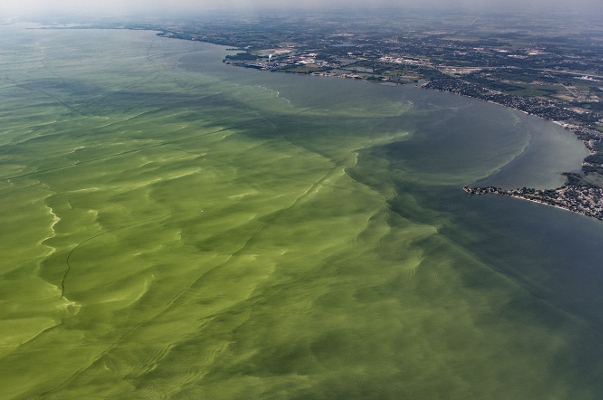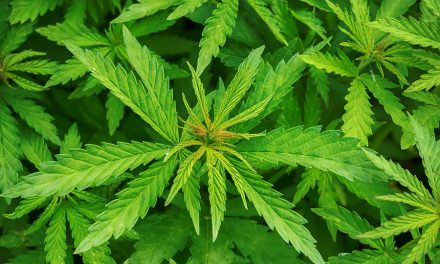For years now, Lake Erie- one of the five Great Lakes- has had to deal with algae blooms similar to those we are dealing with in Florida. And now, glyphosate has been linked to those blooms. (And just like in Florida, the algae is killing aquatic life and fouling up the drinking water.)
“Phosphorus—attributed to farm runoff carried by the Maumee River—has long been identified as a leading culprit feeding the excessive blooms in the western Lake Erie basin. Now, according to a new study from chemistry professor Christopher Spiese, a significant correlation has been established between the increased use of glyphosate to the percentage of dissolved reactive phosphorus (DRP) in the runoff.”1
In the mid-1990’s, DRP loads in Lake Erie increased “at the same time that farmers began the widespread cultivation of crops genetically engineered to withstand multiple applications of Roundup.”2 And it is this increased use says Spiese (who works at Ohio Northern University) that feeds the blooms.
“Spiese took soil samples all over the Maumee watershed, applied P to them and then sprayed glyphosate to see how much P was released vs. soil that wasn’t sprayed with glyphosate after 24 hours. He saw desorption occurred all over the watershed, but certain areas were higher than others, specifically in the southeastern corner.
Based on the average two glyphosate applications growers make every year, Spiese estimates that overall, 20-25 percent of the DRP runoff is caused by glyphosate. But depending on the location within the watershed, that percentage could be much lower or much greater.”3
This isn’t the first time scientists have found glyphosate behind the blooms, either. In 2009, Ohio Sea Grant researchers, Drs. R. Michael McKay and George Bullerjahn of Bowling Green State University found the poison could only be detected in the lake at certain times of the year- after crops were planted.
RELATED STORY:
Every year, about 2.2 million pounds of Roundup is applied in the Lake Erie watershed. But it doesn’t stay there, it travels to “adjacent waterways particularly in the spring.”4And, according to Bullerjahn, “It turns out that many cyanobacteria present in Lake Erie have the genes allowing the uptake of phosphonates, and these cyanobacteria can grow using glyphosate and other phosphonates as a sole source of phosphorus.” 5
RELATED STORY:
The EPA says that Lake Erie blooms have increased “at record levels” in the last decade and they expect them to become more common due to warmer temperatures and the heavy rainfall that feeds algae growth.
RELATED STORY:
In February the U.S. and Canada announced a goal to reduce the amount of phosphorus entering affected areas of Lake Erie by a total of 40 percent by 2025. We shall see if that happens but hope for the sake of the lake, its inhabitants and the people who live around it, that they do.












